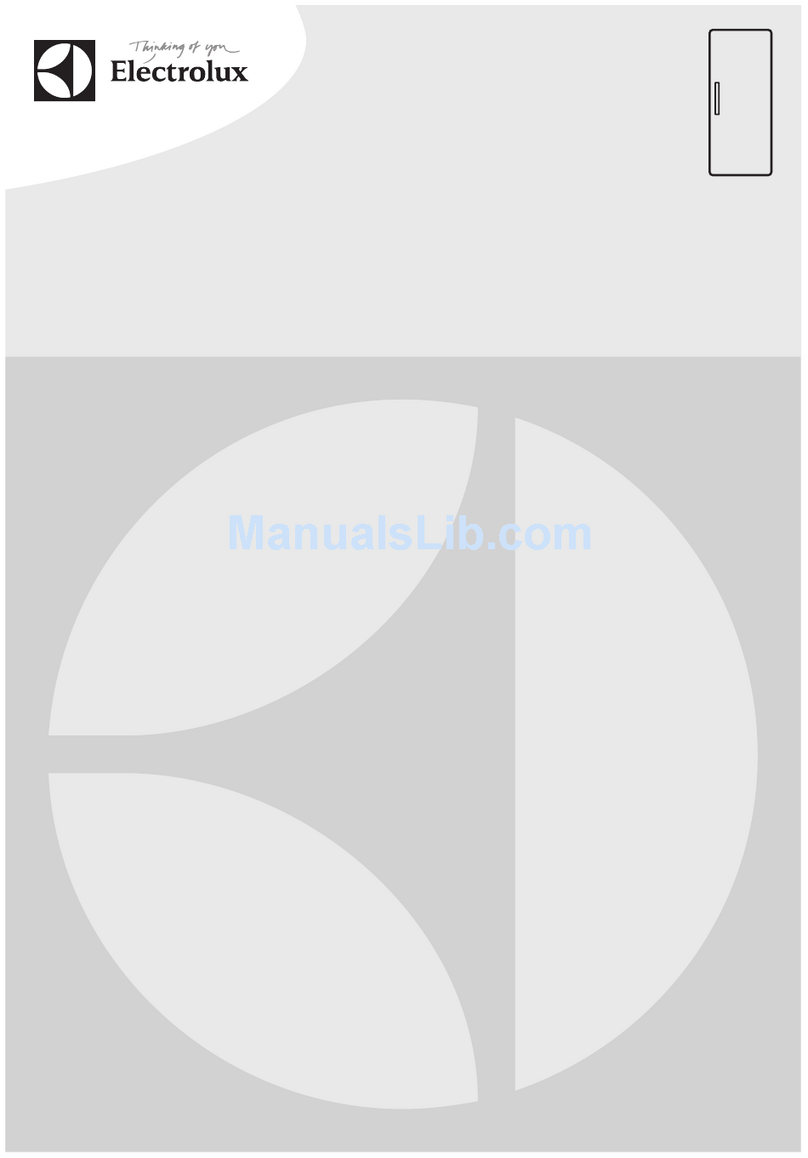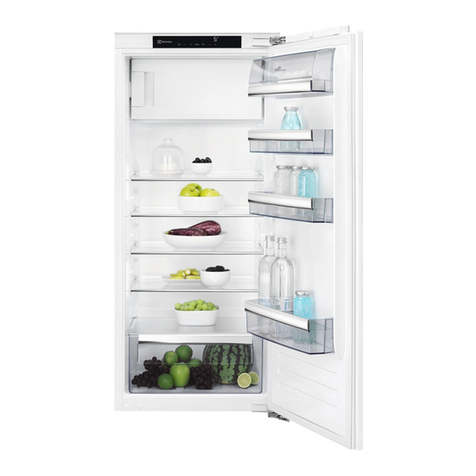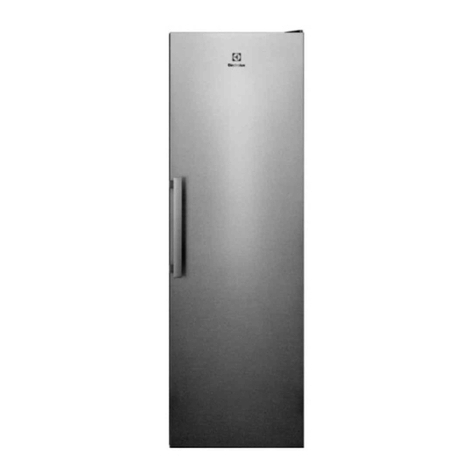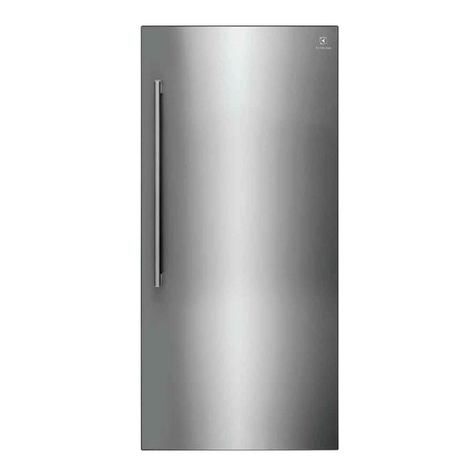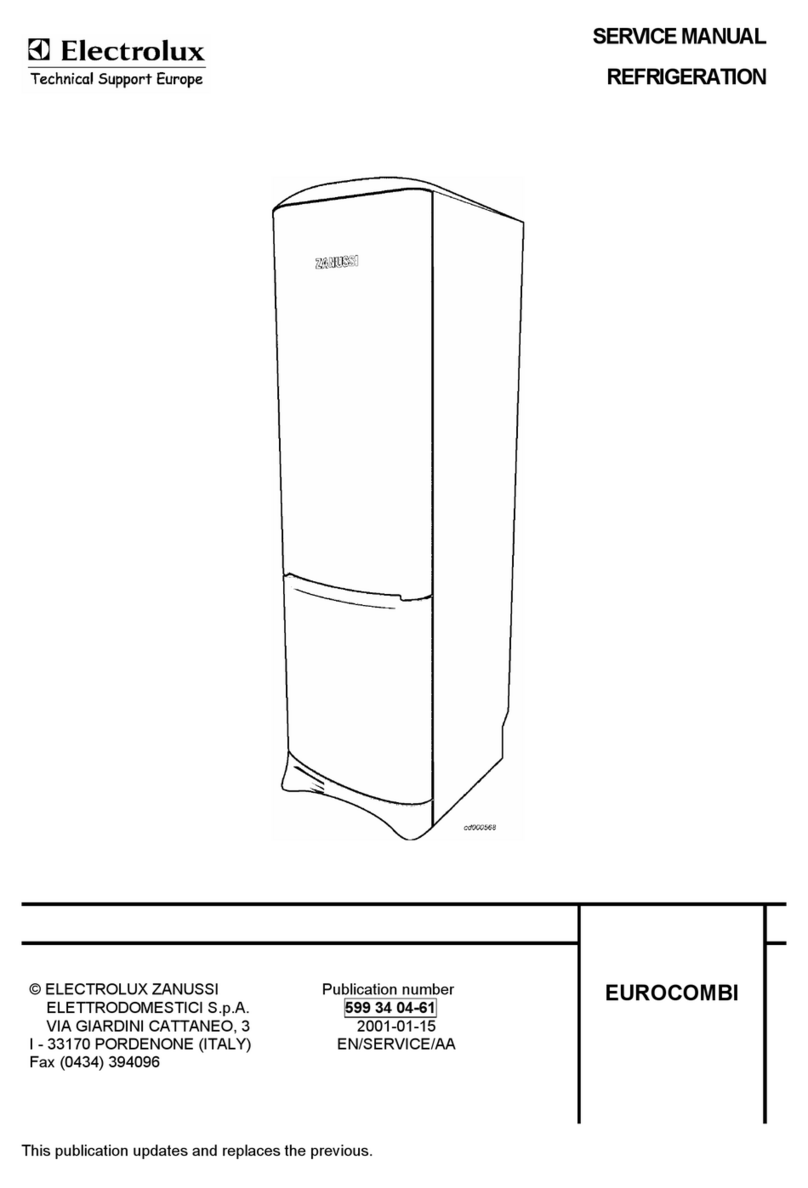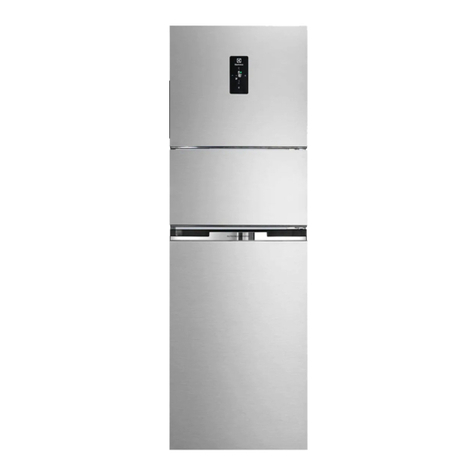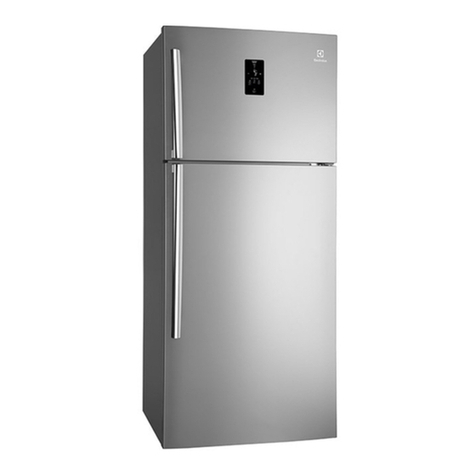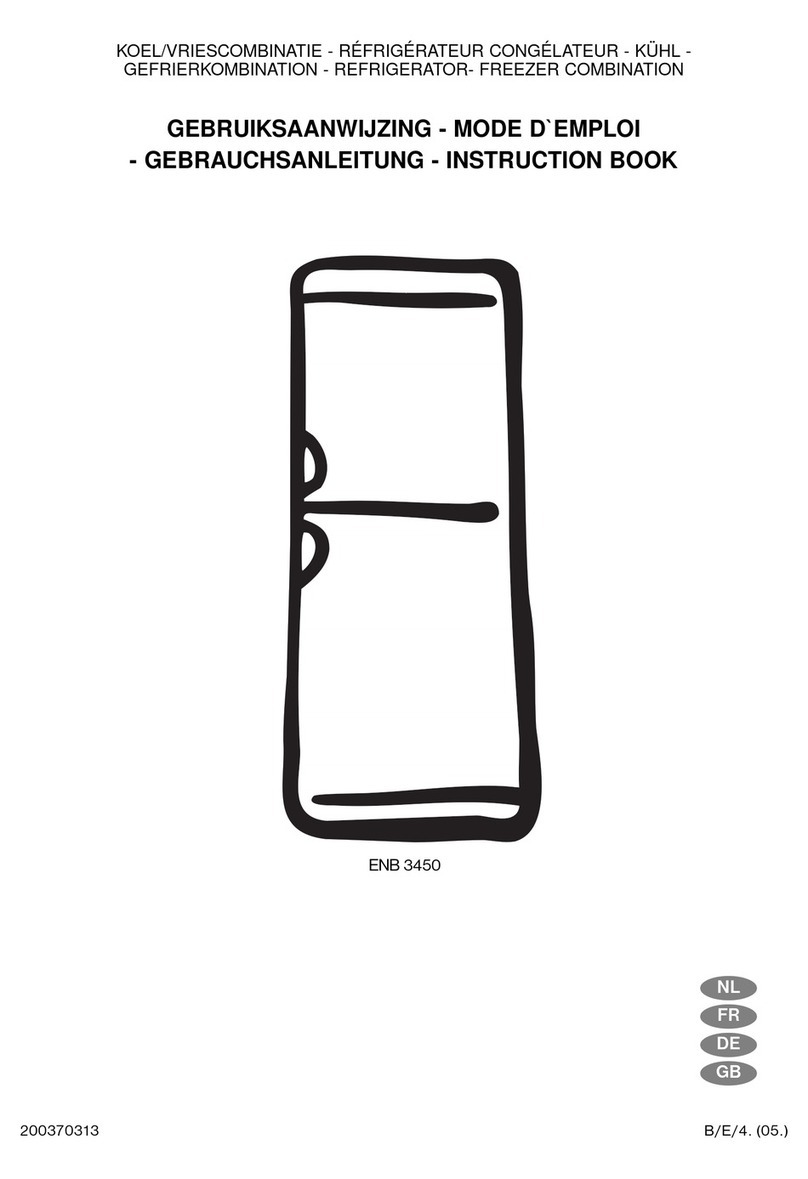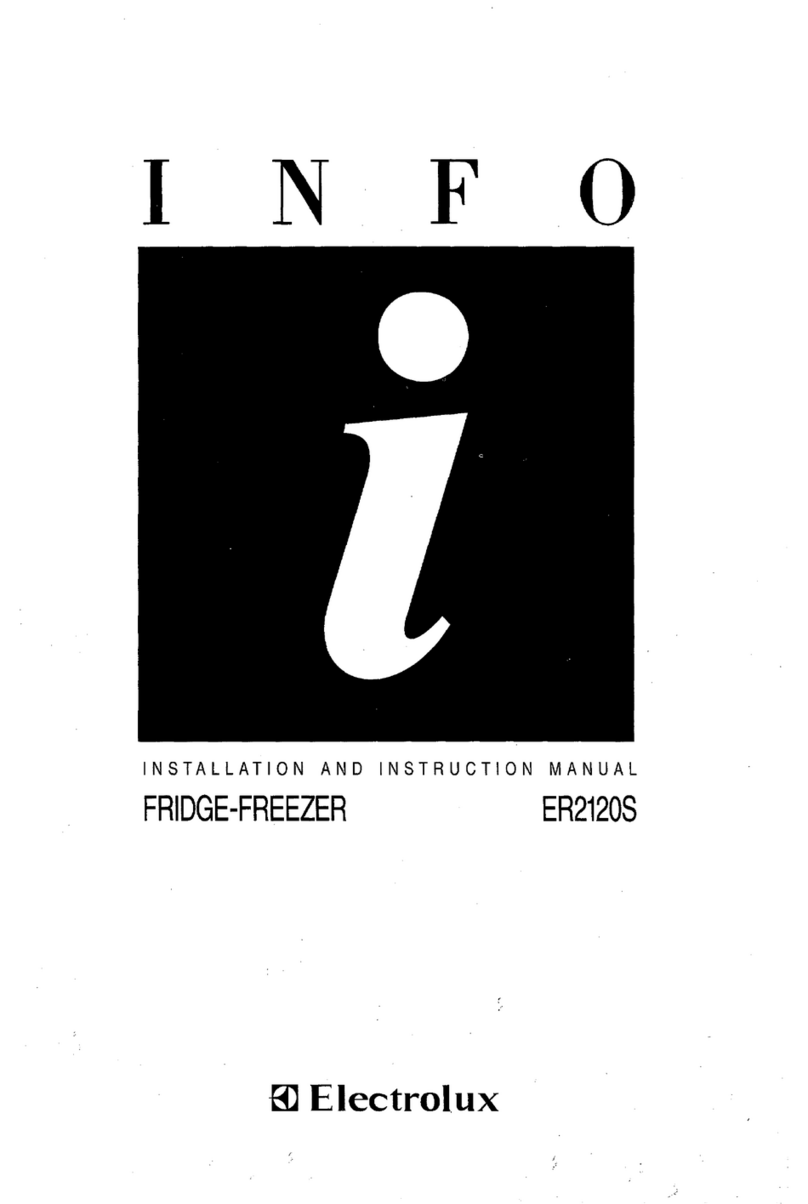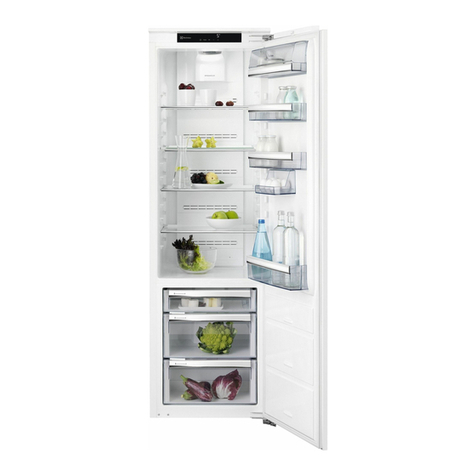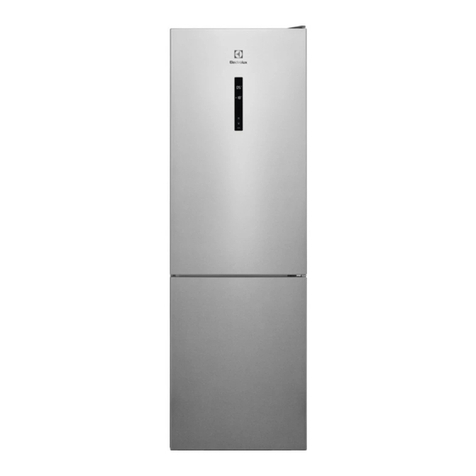12. Assemble the two door on door adjustment screws to
the top flange of the refrigerator door.
13. Secure the top side hinge on to the door using two
M5x10 screws. Secure the bottom side hinge on to
the door using two M5x10 screws.
14. Stand the refrigerator upright ensuring masonite or
similar is placed under the door to protect the floor
and the refrigerator from damage.
Note: Grab the power cord behind the refrigerator. Using a
piece of string approximately 2m long, tie a knot at the plug
end of power cord. Pull the other end of the string through
the top ventilation gap till the power cord plug is pulled
close enough to the top ventilation gap. Anchor the string
with the power cord to be accessible later.
15. Carefully tilt then slide the refrigerator into the cabinet,
resting on rear rollers initially and then the front rollers.
Please take care to avoid damage to refrigerator and
cabinet.
16. Refrigerator cabinet needs to be aligned with the front
edge of the wooden cabinet. To do this, adjust the
height of the refrigerator by turning the adjusting nut.
Turn the adjusting nut by inserting a screwdriver into
one of the slots and turn clockwise or anti-clockwise to
raise and lower.
17. Check alignment using a straight edge – such as a ruler
– at two positions: top and bottom.
6 installation manual electrolux built-in refrigeration
General Installation
18. Pull the refrigerator slightly forward and attach the
bottom hinge bracket cover and top hinge bracket
cover with the nylon washer and the screws supplied.
19. Move the refrigerator into the cabinet till both top and
bottom cover flanges touch the cabinet.
20. Screw the top and bottom hinge to the cabinet using
the wood screws supplied.
21. Slide across the top and bottom non-hinge side
mountings until they touch the cabinet and tighten the
M5 countersunk screws. Then using the wood screws,
attach the bracket to the cabinet.
22. Set the 2 plastic setting gauges – one on each
adjustment screw. Ensure that the leg of the plastic
gauge rests on top of the door using door adjustment
screws as a jig for left and right side. Adjust the gauge
so the slot on the gauge matches the top face of the
wooden cabinet as well as aligning with surrounding
kitchen cabinetry.


